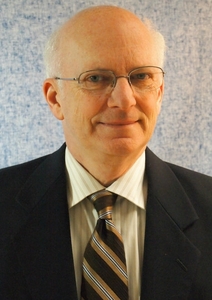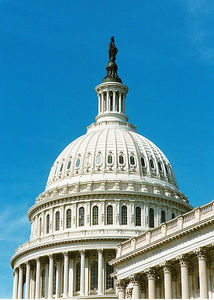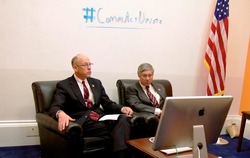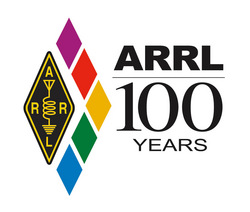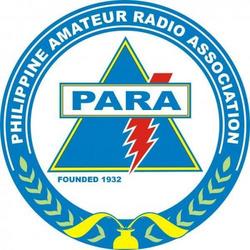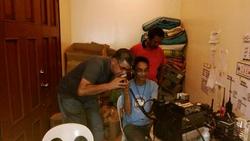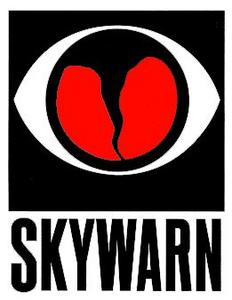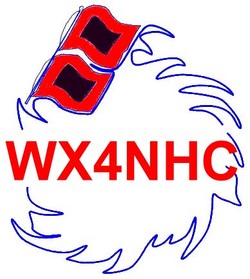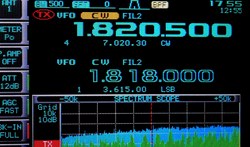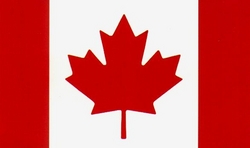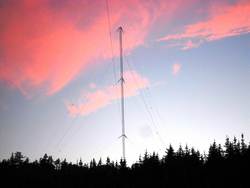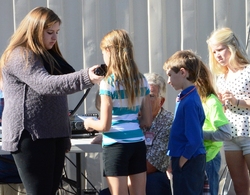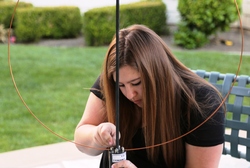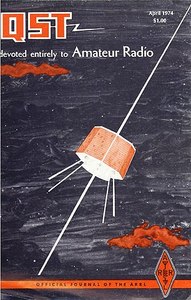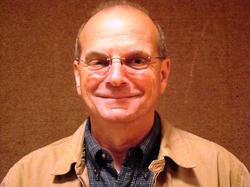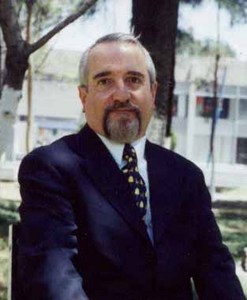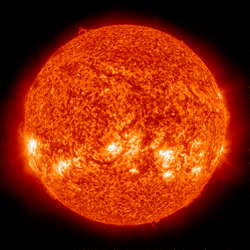 December 5, 2013 John E. Ross, KD8IDJ, Editor
| |||||||||||||||||||||
Regulatory: ARRL Files Erratum to "Symbol Rate" Petition for Rule Making The ARRL has filed an Erratum with the FCC to correct an error in its "symbol rate" Petition for Rule Making (PRM), filed November 15 with the FCC and put on public notice for comment as RM-11708 a few days later. The League's petition asks the FCC to delete the symbol rate limit in §97.307(f) of its Amateur Service rules and replace it with a maximum bandwidth for data emissions of 2.8 kHz on amateur frequencies below 29.7 MHz. The Erratum, filed November 26, removes an erroneous reference in the appendix at §97.307(f)(3) to "unspecified digital codes" and includes a corrected appendix.
"In one respect the criticism being voiced about our RM-11708 petition has some merit," said ARRL CEO David Sumner, K1ZZ. "This is with regard to the addition of 'unspecified digital codes' language to §97.307(f)(3). This change is not discussed at all in the body of the petition and was not intended to be included in the proposal." The Erratum "relates only to the Appendix as originally filed, and only with respect to the proposed revised text of §97.307(f)(3)," The League said. "The remainder of the Petition was correct as filed." The revised proposed §97.307(f)(3) will read: "Only a RTTY or data emission using a specified digital code listed in §97.309(a) of this part may be transmitted. The authorized bandwidth is 2.8 kHz." Sumner pointed out that in 1995 the FCC clarified that "specified digital code" is any digital code that has its technical characteristics publicly documented. "All of us who reviewed the draft and missed this are deeply sorry for the confusion thus caused," Sumner said. In its petition, the ARRL said that the changes it is proposing "would, in the aggregate, relieve the Amateur Service of outdated, 1980s-era restrictions that presently hamper or preclude Amateur Radio experimentation with modern high frequency (HF) and other data transmission protocols." Regulatory: Plans Announced to Update the Communications Act of 1934
The US House Communications and Technology Subcommittee has announced plans for a multi-year effort to examine and update the Communications Act of 1934, the overarching law under which the FCC functions. The subcommittee, part of the US House Energy and Commerce Committee, is chaired by Oregon Republican Greg Walden, W7EQI. Walden and Energy and Commerce Committee Chair Fred Upton of Michigan made the announcement December 3. "Today we are launching a multi-year effort to examine our nation's communications laws and update them for the Internet era," Upton said. "The United States has been the global leader in innovation and growth of the Internet, but unfortunately, our communications laws have failed to keep pace." ARRL CEO David Sumner, K1ZZ, noted that the most recent significant update of the Communications Act was in 1996. "Under the leadership of Greg Walden, the subcommittee and its staff are well equipped to take up the challenge," Sumner said. "The ARRL will be monitoring the work closely as it goes forward next year and beyond."
The plan was made public via Google Hangout, where the committee leaders were joined by former FCC Commissioner Robert McDowell, who said he was "delighted" to learn of the update plans. Upton explained that the process, to start in 2014, will involve a series of white papers and hearings focusing on what might be done "to improve the laws surrounding the communications marketplace as well as a robust conversation utilizing all platforms of digital media." He suggested a bill would be ready by 2015. Walden said, "A lot has happened since the last update" and that the Communications Act is "now painfully out of date." He said he wants to open the discussion to input from everyone, and that interested parties may follow the plan's progress via Twitter. "It's important for people to have an opportunity to weigh in," he said. "This is really a public process to get better public policy." ARRL Centennial: ARRL Granted Use of W1ØØAW for League's Centennial
The FCC has authorized the Maxim Memorial Station W1AW to also use the call sign W1ØØAW during 2014, the ARRL's centennial year. Contacts made from the Maxim Memorial Station in Newington, from regional Centennial conventions, and during the IARU HF Championship will use W1ØØAW, with portable designators as appropriate. The "W1AW WAS" operations throughout 2014 from each of the 50 states will use W1AW, not W1ØØAW. Bulletins and code practice transmissions during 2014 also will still use W1AW. Contacts with W1ØØAW will be worth 100 points in the ARRL Centennial QSO Party. To help kick off the ARRL Centennial, special W1ØØAW activity will begin at 0500 UTC on January 1, 2014 (midnight in Newington), and will include participation in ARRL's Straight Key Night; one CW station will use Hiram Percy Maxim's straight key. Activity will continue throughout New Year's Day. Public Service: Amateur Radio Disaster Response in Philippines Winds Down After weeks of deployment, the Philippines Amateur Radio Association (PARA) HERO (Ham Emergency Radio Operations) Network stood down November 27, although some activity continues during the disaster cleanup. PARA Vice Chief Operating Officer Ramon Anquilan, DU1UGZ, said that four stations -- DU1IVT, DU1VHY, DV1SMQ, and DU1EQ -- remain in operation to monitor for any assistance from local HERO stations. Much remains to be done in the devastating aftermath of Typhoon Haiyan (Yolanda), which injured more than 26,000 people, displaced some four million residents, destroyed 1.2 million houses, and wreaked extensive damage and destruction to agriculture and to the Philippine infrastructure.
Anquilan said that while PARA and its HERO Network stations realize that rescue and relief agencies now are handling the bulk of vital emergency communication traffic, his organization still has plenty to do. He said this includes accurately documenting what the HERO Network was able to accomplish, gaining visibility by authorities and communities, and furthering HERO's role in disaster preparedness. He said authorities already are taking greater notice of HERO, and PARA wants to make sure its role is not forgotten within the enormity of the disaster. In the hard-hit Tacloban area and the rest of Eastern Visayas, an ACCESS-5 Amateur Radio team continues to be embedded with the Command Post National Disaster Risk Reduction and Management Council in Tacloban City. Three operators are on duty there. ACCESS-5 Tacloban is now augmented by some 35 ACCESS-5 members from Catbalogan, Samar, and Burauen, Leyte. PARA Secretary-General Butch Pacana, DU1RP, drove from Davao City to visit HERO stations in Borongan, Eastern Samar and Tacloban City. While in Borongan, he served as courier for the situation report from Eastern Samar to Tacloban City -- the first official situation report from Eastern Samar. This helped provincial officials find a suitable means of transport to Tacloban. He reported that HERO operators were coping well and up to the task. Don Bosco Technical College (DX1DBT) officials maintain their HF link between Borongan, Eastern Samar, Cebu and Mandaluyong in metropolitan Manila.
In the Central Visayas, Iver Astronomo, DV6ILA, is still active from the Capiz Provincial Disaster Risk Reduction and Management Council in Roxas City. The DV6ILA signal got a big boost through the donation of an HF transceiver by Bing Rodriguez, DU6RCR, and a microphone loaned by Bob Garcia, DU6BG. Arnel, DV6WAV, reports that power is back on at the Capiz State University where he's a professor, and that he has activated another VHF/HF station. The HERO station DV6ILA and DW6WAV were staffing in Roxas City earlier got a surprise visit from the bureau chief of the UN Office for the Coordination of Humanitarian Affairs (UN OCHA), Fernando Arroyo EA4BB, who "had a few short QSOs on the spot." Arroyo later appointed DV6WAV to head his convoy team to meet international aid volunteers at the airport. Other HERO stations also remain active, occasionally reporting on their activities and providing progress updates on the restoration of services. Anquilan said that PARA now has a permit to import equipment, and its Board will meet on its placement and use. He acknowledged donations by Patrick Prescott, KC1AJT, who sent an HF transceiver, and Stanley Jungleib, WA6LVC, who sent an antenna tuner. Media Hits On November 17, Anquilan appeared on both the BBC World Service radio and National Public Radio, in interviews arranged with ARRL assistance. "We are just hobbyists, and we are converted into this public service role when there are emergencies," he told the BBC, calling public service work on ham radio "uplifting and fulfilling."
Anquilan told NPR's Rachel Martin on "Weekend Edition Sunday" that the Secretary Defense was one of the first people to use the Amateur Radio link set up in Tacloban. He explained that the Secretary of Defense and the Secretary of the Interior had been dispatched to Tacloban before the storm, and after the hurricane hit, the central government in Manila did not know their whereabouts. "Even the president could not contact his cabinet on the ground in Tacloban," Anquilan said. "So, one of the first messages for us to relay was the message of the Secretary Defense." Anquilan and Nathan Eamiguel, DU5AOK, were featured in radio interviews on November 23. "The program's host, Francis 'Kiko' Flores, welcomed the participation of Amateur Radio in the emergency," Anquilan said. "He recalled his own experiences in the 1991 Baguio earthquake, where he personally experienced the usefulness of Amateur Radio emergency communications." -- Jim Linton, VK3PC, Chairman IARU Region 3 Disaster Communications Committee Public Service: SKYWARN Recognition Day is December 7
WX4NHC, the Amateur Radio Station at the National Hurricane Center (NHC) in Miami, will be on the air for SKYWARN Recognition Day (SRD), Saturday, December 7, 1400 until 2300 UTC. Hurricane season officially ended November 30. "This will be our 15th year of participation in the SRD, and our 33rd year of public service at NHC," said Julio Ripoll, WD4R, the WX4NHC Amateur Radio assistant coordinator. "The purpose of this event is to test the Amateur Radio Station operations and equipment between NWS Office nationwide and is sponsored by NOAA. This event is excellent practice for ham radio operators as well as NWS staff to become familiar with the unique communication skills available during times of severe weather. It is also a fun event." WX4NHC will take advantage of the occasion to conduct operator training. The station will make contacts on various frequencies and modes, to exchange signal reports and basic weather data, such as "sunny" or "rainy" between WX4NHC, ham stations at other NWS offices, and stations throughout the US.
WX4NHC will be on HF, VHF, UHF, APRS (2 meters and 30 meters), and Winlink (subject should contain //WL2K). "We will try to stay on the recognized Hurricane Watch Net (HWN) frequency 14.325 MHz most of the time and announce when we QSY," Ripoll said. Ripoll said that due to space and equipment limitations at the NHC, plans call for having two to three operators on duty per shift. "We cannot be everywhere and on every mode at the same time," he explained. "You may be able to find us on HF by using one of the DX spotting networks, such as the DX Summit website." WX4NHC operators also will be active on the VoIP Hurricane Net, from 2100 until 2300 UTC (IRLP node 9219 / EchoLink WX-TALK Conference node 7203). South Florida area VHF and UHF repeaters will be part of the mix as well. QSL cards are available via WD4R, with an SASE. Do not send QSLs directly to the National Hurricane Center. Entry to the NHC will be restricted during this event. On the Air: The 2013 ARRL 160 Meter Contest is This Weekend! Top Band stalwarts and newcomers will up the activity level on 160 meters this weekend, as the ARRL 160 Meter Contest gets underway Friday evening. The event offers an excellent opportunity for any station, regardless of size or antenna system, to try their luck on 160. This popular, CW-only activity each year attracts operators of all experience levels.
Multipliers in the contest are ARRL/RAC Sections and DXCC entities. Alaska (KL7) and Hawaii (KH6) can be worked by both DX and W/VE stations, as can Caribbean US possessions (KP1-KP5) and Pacific Ocean territories (KHØ-KH9). Even stations with limited antennas for 160 should find many multipliers within range. Previous years have seen inventive antenna solutions from those with limited space. Some interesting antennas have included flagpoles, house gutters, and even 40 meter dipoles. If you don't have room for a dedicated 160 meter antenna, you can make contacts with just about anything; many Top Band devotees have outstanding ears and will be eager to work you. The 2013 ARRL 160 Meter Contest runs from 2200 UTC Friday, December 6, until 1600 UTC Sunday, December 8. Complete rules and entry forms may be found online. Logs must be e-mailed to 160meter@arrl.org or postmarked no later than 1600 UTC January 7, 2014. Send paper logs to ARRL 160 Meter Contest, 225 Main St, Newington, CT 06111. Soapbox comments and photos can be uploaded on the Soapbox page. On the Air: Canada Issues Short-Term 472-479 kHz Experimental License
Industry Canada has issued an experimental radio license to the Marconi Radio Club of Newfoundland (VO1MRC). Experimental station VX9MRC has been endorsed to conduct transmissions on 472-479 kHz for just two days -- December 14 and 15 -- to call attention to the potential new Amateur Radio band there and to the role ham radio plays in emergency communication. "A special message from Bauline, Newfoundland, Mayor Christopher Dredge will be sent on CW on 478 kHz as a beacon transmission on these days," said Joe Craig, VO1NA, a low-frequency enthusiast and MRC leader. "Those receiving the message are invited to forward it to their respective municipal representative." Craig said the ERP should be about 2 W on 478 kHz, with the message sent at approximately 12 WPM.
Delegates attending the 2012 World Radiocommunication Conference (WRC-12) approved the secondary allocation between 472-479 kHz for the Amateur Radio Service. Industry Canada has proposed creating a new MF Amateur Radio band at 472-479 kHz on a secondary basis. Last year the ARRL asked the FCC to carve out the same band for US hams. In November 2012 the FCC released a Notice of Proposed Rule Making and Order (ET Docket 12-338) proposing the creation of a new LF ham band at 135.7 to 137.8 kHz. Canadian hams already have such an allocation. Ham Radio in Space: High Schooler Returns to Her Elementary Alma Mater to Lead ISS Contact Sixteen-year-old Rebecca "Becca" Rubsamen, KJ6TWM, recently returned to her elementary school alma mater to help youngsters there speak via Amateur Radio with astronaut Mike Hopkins, KF5LJG, at the helm of NA1SS aboard the International Space Station. The November 13 event at Rancho Romero Elementary School in Alamo, California, was sponsored by the Amateur Radio on the International Space Station (ARISS) program.
"Becca approached Rancho Romero Elementary School, her alma mater, with the idea to do an ARISS contact there," her dad, Reid Rubsamen, N6APC, told ARRL. "She drafted the application, helped develop the curriculum, and convinced astronaut James Van Hoften to come to Science Night to help promote the contact. Becca and I were very excited about the whole thing!" Becca assembled from a kit the Elecraft K3 and 2 meter transverter she used for the ARISS contact. "I built the antennas in my backyard," she explained on her website, which includes audio of the contact. "It took a flat bed truck and a fork lift to put them on the roof at Rancho!" During the approximately 8 minute contact, the youngsters at the school posed a wide array of questions to Hopkins, who, responding to one student's query, explained that the ISS orbits Earth 16 times a day, making it hard to keep track of time. "We have a great group on the ground that helps up keep track of time and lets us know when it's time to go to bed," he said. Hopkins told the students that the crew members are "the guinea pigs" for some of the science experiments in space that are aimed at determining how humans fare in the spacecraft's microgravity environment, which, he pointed out, takes a toll on muscles and bones. "We exercise about 2 hours a day to try to counteract that bone loss," he said. But, he added, "You're never going to forget what it's like to float."
Becca's is a nearly all-ham family. Her mother, Amy, is KJ6WMF, and her 13-year-old brother Mike is KJ6WMG. Only her 7-year-old brother is not yet licensed. According to her dad, Becca believes the CubeSats may be "the next big thing" to promote ham radio and STEM (science, technology, engineering, mathematics) education. "She is going to install a permanent UHF/VHF ground station at Rancho Romero to help this happen," he told the League. As for the future, her dad said Becca -- a sophomore at Bentley School in Lafayette, California -- sees a career in health care or technology. "Maybe she'll do both," he added. Tim Bosma, W6MU, served as the ARISS mentor for the contact. He told the Contra Costa Times newspaper that Becca was among the youngest people to act as a lead operator" for a school contact. "It's very impressive," he said, adding that it was something he had not seen in his 30 years as a mentor for the program. He is working with Becca as they plan the installation of a VHF/UHF ground station at Rancho Romero to work Amateur Radio satellites. ARISS is an international educational outreach with participation from ARRL, NASA, ESA, the Russian Space Agency (ROSCOSMOS), CNES, JAXA, CSA and AMSAT. Ham Radio in Space: Happy Birthday to AO-7! The AO-7 Amateur Radio satellite turned 39 years old on November 15. Launched in 1974 from Vandenberg Air Force Base in California as the second AMSAT Phase 2 ham satellite, AO-7 continues to amaze.
After its batteries succumbed to old age, AO-7 went silent in 1981, only to spring back to life in 2002, although some believe it may have resurrected itself as much as a year earlier. AMSAT describes the Mode A/B bird as "semi-operational" and "almost certainly" running solely from its solar panels. The ham satellite organization theorizes that AO-7's batteries shorted when they failed, but the short circuit subsequently opened, allowing the satellite regain some functionality. This means AO-7 only works when it receives direct sunlight, and it shuts down when in eclipse. Since the satellite returned, terrestrial users have enjoyed numerous contacts via AO-7. AMSAT-NA this week offered its congratulations to all involved in the designing, building, launching, and operating the satellite, adding, "It's an amazing achievement that, other than the batteries, most of the circuitry continues to function normally 39 years after launch." AMSAT newsletters from the 1970s and early 1980s are available, courtesy of KA9Q. N4HY offers a photo gallery depicting AO-7's construction and launch of AO-7. -- Thanks to Paul Stoetzer, N8HM, via AMSAT News Service Youth: December is YOTA Month!
During December several European countries will promote ham radio to youth as part of a Youngsters On The Air (YOTA) event, on all bands and modes. Stations will be on the air with "YOTA" as a call sign suffix or appendage. "The idea for this is to break the ice for some youngsters," said Bjorn Dettmaring, ON5CFG. "This is not a contest but a shout out to the world of ham radio. Try to get as many youngsters as you can on the air this month," he urged. Awards are available for operators or SWLs working or monitoring YOTA stations. Dettmaring said the December event follows up on the success of the Youngsters On The Air events last summer. Awards are free and will be distributed electronically. Only contacts during December 2013 are valid. Each station may be counted only one time. -- Thanks to Bjorn Dettmaring, ON5CFG People: Riley Hollingsworth, K4ZDH, Receives Radio Club of America's Sarnoff Citation
Retired FCC Special Counsel for the Spectrum Enforcement Division Riley Hollingsworth, K4ZDH, of Gettysburg, Pennsylvania, is the 2013 recipient of the Sarnoff Citation. The Radio Club of America established the award in 1973 to recognize an individual or club member for "significant contributions to the advancement of electronic communications." The Sarnoff Citation has been made to RCA members "who have contributed to advancement of electronic communications in any significant manner, including nontechnical support of the wireless industry," the club's website states.
"I could never adequately thank the Radio Club of America for this award," Hollingsworth said in a statement conveyed to those attending the awards banquet in Orlando. "To receive this -- and it is still hard to believe -- from such a prestigious organization is an amazing journey for a 13 year old in South Carolina just learning to appreciate the magic of radio. Thank you all, and thank you very much for benefiting the entire nation by helping so many people choose a career in wireless." Other Sarnoff Citation laureates include US Senator Barry Goldwater, K7UGA (SK), ARRL Roanoke Division Director Dennis Bodson, W4PWF, and two-way radio pioneer Fred M. Link, ex-W2ALU (SK). In his FCC Enforcement Bureau position, Hollingsworth, who retired in 2008, revived enforcement of Amateur Service rules and regulations. Milestones: Former FMRE President Carlos Levy, XE1YK, SK Carlos Eduardo Levy Vazquez, XE1YK, of Mexico City -- a well-known radio amateur and academic who served from 2004 until 2008 as president of the Federación Mexicana de Radio Expermentadores (FMRE) -- Mexico's IARU member society -- has died. He was 62.
Levy led a successful campaign to unite most of Mexico's major Amateur Radio clubs behind FMRE. Licensed in 1973, he was a DXpeditioner, activating Revillagigedo in 1973 and 2007 as XF4YK. "Carlos was a friendly, but strong, leader who tried very hard to improve Amateur Radio in Mexico and the FMRE," said ARRL Membership and Volunteer Programs Manager Dave Patton, NN1N. "He was the right guy at the right time for FMRE, and he will be missed." Levy was a professor of international communications at the University Nacional Autónoma de México, where he'd worked for 26 years. He held a PhD in political and social sciences and a master's in international relations, and his academic interests focused on globalization of media, freedom of information, and international politics. Survivors include his brother Pepe, XE1J, who serves as ARRL's DXCC card checker in Mexico. Solar Update
Tad Cook, K7RA, in Seattle, Washington, reports: Due to the Thanksgiving holiday in the United States (Canada celebrates the same holiday on the second Monday in October, Columbus Day in the US), we had a short bulletin last Wednesday and a catch-up bulletin on Monday, December 2. Solar activity bounced back this week, with average daily sunspot number increasing from 63.6 to 102.9, and average daily solar flux from 130 to 132.9. There were no periods of disruptive geomagnetic activity, although November 30 and December 1 were slightly unsettled. Predicted solar flux for December 5-9 is 140, 145, 140, 135 and 130, then 125 on December 10-11, 130 on December 12, 135 on December 13-14, 130 on December 15-16, 135 on December 17, 130 on December 18-19, 125 and 130 on December 20-21, 125 on December 22-23, 130 on December 24-26, and 125 on December 27-28. There is an odd peak at 165 predicted for January 8, but this seems to be a remnant of a prediction issued from November 25 through December 1, when there were many days in mid-December, late December, and early January with solar flux predicted at 160 to 165. On December 2 these predictions were radically revised downward, with the exception of January 8. From November 25 to December 1 the solar flux prediction was 165 for January 4-10, but starting on December 2 that prediction was revised to solar flux at 130 on January 4-7, and 135 on January 9-10 and 130 on January 11-12, with January 8 standing alone at 165. Predicted planetary A index is 5 and 8 on December 5-6, 12 on December 7-8, 5 on December 9-12, then 10 and 8 on December 13-14, 5 on December 15-25, then 12, 10, 8, 12, and 10 on December 26-30. This weekend is the ARRL 160 Meter Contest, which starts at 2200 UTC Friday, December 6, and ends at 1600 UTC Sunday, December 8 -- a 42 hour period with no time limitation. We will have an updated geomagnetic forecast for the contest in Friday's bulletin. Given recent quiet geomagnetic conditions and longer hours of darkness in the Northern Hemisphere, 160 meters should be in great shape. Just Ahead in Radiosport
Upcoming ARRL Section, State and Division Conventions and Events
ARRL -- Your One-Stop Resource for Amateur Radio News and Information Join or Renew Today! ARRL membership includes QST, Amateur Radio's most popular and informative journal, delivered to your mailbox each month. Listen to ARRL Audio News, available every Friday. Subscribe to... NCJ -- National Contest Journal. Published bi-monthly, features articles by top contesters, letters, hints, statistics, scores, NA Sprint and QSO Parties. QEX -- A Forum for Communications Experimenters. Published bi-monthly, features technical articles, construction projects, columns and other items of interest to radio amateurs and communications professionals. Free of charge to ARRL members: Subscribe to the ARES E-Letter (monthly public service and emergency communications news), the ARRL Contest Update (bi-weekly contest newsletter), Division and Section news alerts -- and much more!
| |||||||||||||||||||||
